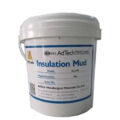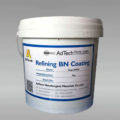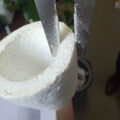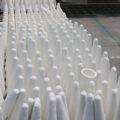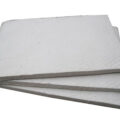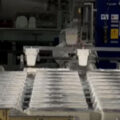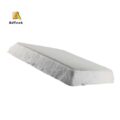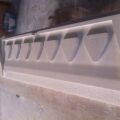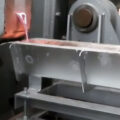Mold coatings are mainly made up of water as a carrier, high temperature binder (usually water glass) and refractory materials. Coatings with different properties have different compositions. Thermal insulation coatings contain thermal insulation mineral mixed materials, such as talc, mica, diatomaceous earth, titanium dioxide, alumina and so on. Lubricating and thermally conductive coatings are usually based on colloidal or semi-colloidal graphite, used for demoulding and reducing thermal insulation of castings. Thermal insulation coating is a coating product between the first two coatings, with good mold release performance and thermal insulation performance.

The aggregate of the mold coatings should have sufficient refractoriness to ensure that no chemical reaction occurs between the coating and the melt under the normal pouring temperature. When choosing coatings in actual production, the properties that people are most concerned about are: lubricity, thermal conductivity and particle size to ensure easy de-molding and surface finish of the casting, and to ensure that the coating has high thermal insulation to prevent the edge of the casting from lacking meat.
Generally speaking, the rougher the surface of the coating, the better the thermal insulation performance, because during the casting process, when the melt flows through the surface of the mold cavity, the melt and the coating are affected by the instantaneous high surface tension of the melt. A void is formed at the interface, so that the coating can obtain the maximum thermal insulation performance. The small contact area between the melt and the coating will significantly reduce the heat transfer effect, thus contributing to the flow of the melt. In addition, rough refractory particles can continuously destroy the oxide film on the surface of the melt when the melt fills the cavity, thereby improving the flow ability of the melt. On the contrary, the contact area between the smooth coating formed by fine particles and the melt increases, thus increasing the heat transfer coefficient of the coating.

